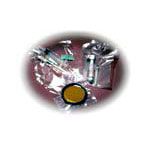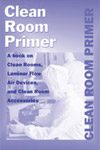Newsletters
- Using Cleanroom Technology for Cannabis Cultivation and Processing
- Understanding Cleanroom Design and Construction Requirements – Don’t Do It Yourself!
- Air Showers – Are they Worth the Cost?
- A Guide to Ultra Clean film Packaging
- Are there Really any Cleanroom Standards Today? YES…, But What do they Actually Mean?
- Excerpts from The Clean Room Primer (also available in booklet form)
- Solutions to Footborne Contamination
- Cleanroom Operating and Maintenance Protocol
Using Cleanroom Technology for Cannabis Cultivation and Processing
As the cannabis market grows, so do the challenges for industry professionals to ensure safe and optimal growth of crops. Grow rooms require precision to safeguard crops from contaminants. Cleanrooms and cleanroom technology offer a solution to effective cannabis cultivation and processing.
UNDERSTANDING CLEANROOM DESIGN AND CONSTRUCTION – DON’T TRY IT YOURSELF
If you browse through any bookstore, you will notice a large section devoted to “Do It Yourself” books on many and various subjects. While this is a current rage, magnified by the poor state of the economy, there are still some projects best left to the experts.
AIR SHOWERS – ARE THEY WORTH THE COST?
Do they really reduce contamination? Can they be cost justified?
The efficacy of air showers in the contamination control process has been a source of debate for several years.
Tests have been conducted which prove the effectiveness of air showers. The tests do show that an air shower does reduce particulate. For the most part, reduction in particulate matter is dependent upon the particle size, the type of garment worn, the cycle time, and directly relates to the air shower design and how it is used and maintained.
A GUIDE TO ULTRA CLEAN FILM PACKAGING

Introduction: This guide has been written to assist the engineer, purchasing agent, cleanroom manager, laboratory researcher, quality control manger, packaging specialist, etc., in the current technology of clean film packaging.
In the space allowed, I have tried to be as thorough as possible in this overview, but I’m sure after reading the article, many of you may still have questions. Please feel free to contact Liberty Industries, Inc. by phone, mail, fax, or email. Contact information is listed at the end of this newsletter.
ARE THERE REALLY ANY CLEANROOM STANDARDS TODAY?
YES… BUT WHAT DO THEY ACTUALLY MEAN?
Officially on November 29th, 2001, the United States General Services Administration (GSA) announced that Federal Standard 209E, Airborne Particulate Cleanliness Classes in Cleanrooms and Clean Zones, has been canceled and is superseded by ISO Standards for cleanrooms and associated controlled environments.
The new standards are: ISO 14644-1 Classification of air cleanliness and ISO 14644 -2 Specifications for testing and monitoring to prove continued compliance with ISO 14644-1. For those who are interested, copies of the ISO documents may be ordered through the IEST web site,
www.iest.org or via email at publicationsales@iest.org
EXCERPTS FROM The Clean Room Primer (also available in booklet form)

Cleanrooms have been in existence for approximately fifty years and since their inception, much has been written regarding this concept of cleanliness relative to creating dust-free atmospheric areas wherever required. However, a problem that must be resolved is that printed information is expressed in highly technical terms and an advanced degree in engineering is generally required to facilitate comprehension of technical data concerning this specific field. This guide would be devoid of all technical jargon – written in layman’s language, enabling anyone to comprehend – as the contents would be informative, simple, and enjoyable to read.
Solutions to Footborne Contamination
Learn more about our footborne contamination control solutions including our Tacky Mats, shoe brush machines, and additional mat and flooring solutions.
> Read the full article (PDF – 915KB)
Cleanroom Operating and Maintenance Procedure
Follow these instructions to achieve the maximum potential from a cleanroom facility. (Note: It is not intended that these instructions be used in all cleanrooms under all circumstances. These instructions should be used as a guide in total, or part, as needed to achieve the end results of individual cleanroom specifications.)
> Read the full article (PDF – 540KB)

